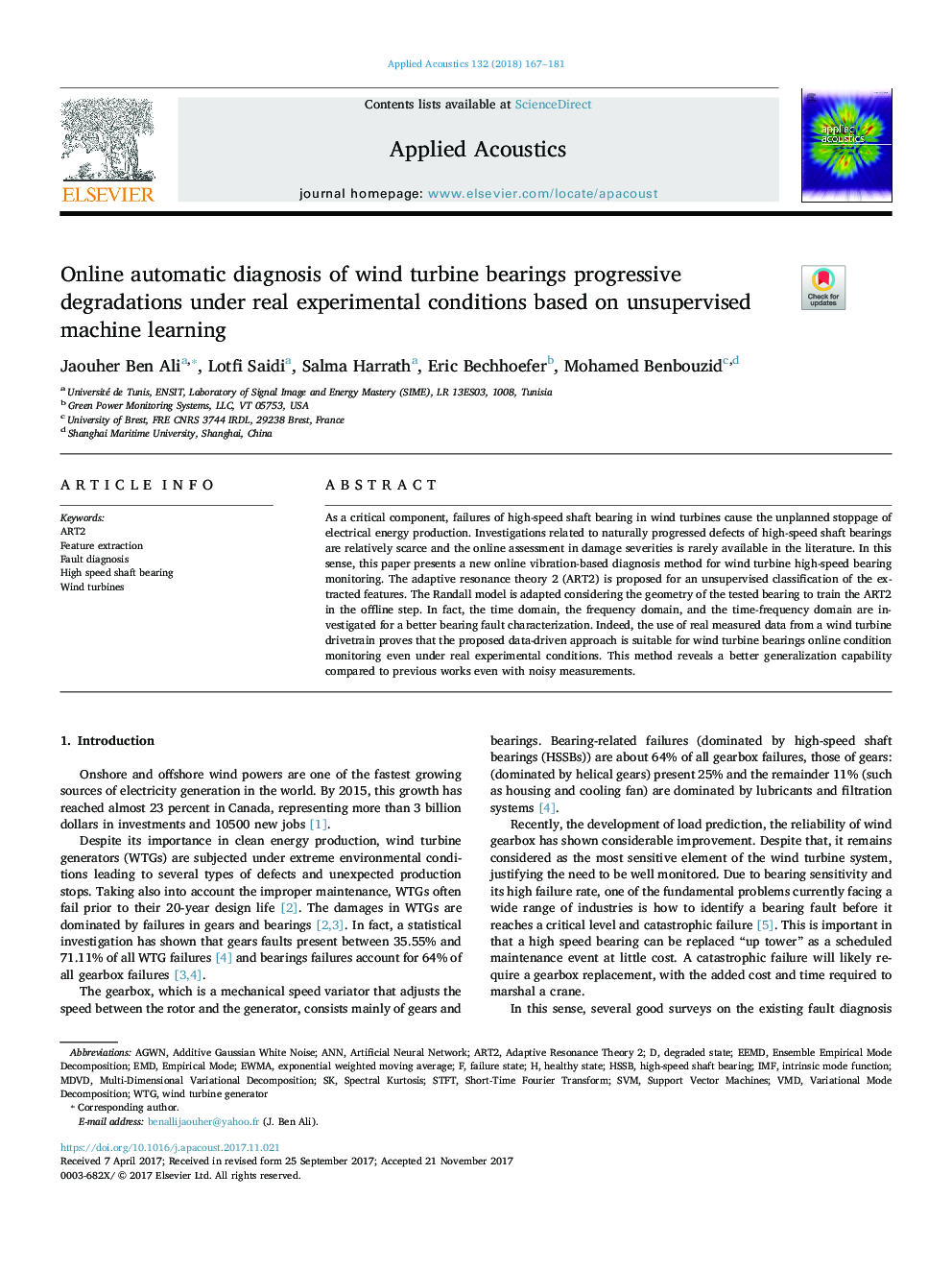| Article ID | Journal | Published Year | Pages | File Type |
|---|---|---|---|---|
| 7152358 | Applied Acoustics | 2018 | 15 Pages |
Abstract
As a critical component, failures of high-speed shaft bearing in wind turbines cause the unplanned stoppage of electrical energy production. Investigations related to naturally progressed defects of high-speed shaft bearings are relatively scarce and the online assessment in damage severities is rarely available in the literature. In this sense, this paper presents a new online vibration-based diagnosis method for wind turbine high-speed bearing monitoring. The adaptive resonance theory 2 (ART2) is proposed for an unsupervised classification of the extracted features. The Randall model is adapted considering the geometry of the tested bearing to train the ART2 in the offline step. In fact, the time domain, the frequency domain, and the time-frequency domain are investigated for a better bearing fault characterization. Indeed, the use of real measured data from a wind turbine drivetrain proves that the proposed data-driven approach is suitable for wind turbine bearings online condition monitoring even under real experimental conditions. This method reveals a better generalization capability compared to previous works even with noisy measurements.
Keywords
ANNWTGART2Exponential weighted moving averageEWMASTFTEEMDVMDEMDFeature extractionShort-time Fourier transformEnsemble Empirical mode decompositionVariational mode decompositionFault diagnosisWind turbinesSpectral kurtosisArtificial Neural NetworkIMFintrinsic mode functionSVMSupport vector machinesWind turbine generator
Related Topics
Physical Sciences and Engineering
Engineering
Mechanical Engineering
Authors
Jaouher Ben Ali, Lotfi Saidi, Salma Harrath, Eric Bechhoefer, Mohamed Benbouzid,
